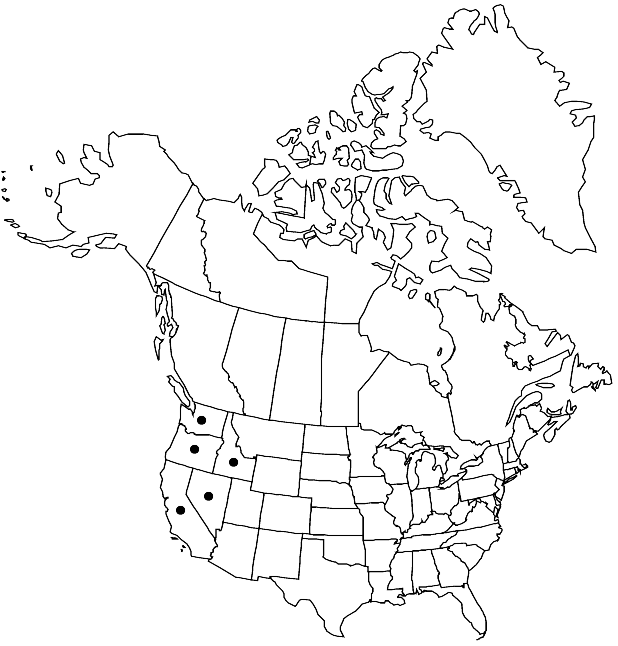Difference between revisions of "Boechera suffrutescens"
Brittonia 55: 3. 2003.
FNA>Volume Importer |
FNA>Volume Importer |
(No difference)
| |
Revision as of 20:23, 24 September 2019
Perennials; long-lived; sexual or apomictic; caudex woody. Stems usually 1 per caudex branch, arising from center of rosette, elevated above ground surface on woody base, 1–4(–5) dm, usually glabrous proximally, rarely pubescent, trichomes short-stalked, 2-rayed, 0.1–0.3 mm, glabrous distally. Basal leaves: blade narrowly oblanceolate, 1.5–6 mm wide, margins entire, not ciliate or, rarely, with simple trichomes to 0.7 mm, surfaces glabrous or sparsely to densely pubescent, trichomes short-stalked, 2–6-rayed, 0.07–0.4 mm. Cauline leaves: (4–)6–12, sometimes concealing stem proximally; blade auricles 0.5–2 mm, surfaces of distalmost leaves glabrous. Racemes 6–12-flowered, usually unbranched. Fruiting pedicels reflexed, usually abruptly recurved at base, otherwise straight, 4–18 mm, glabrous. Flowers pendent at anthesis; sepals glabrous; petals purple or whitish with rose tips, 4.5–6 × 2–2.5 mm, glabrous; pollen ellipsoid or spheroid. Fruits reflexed to closely pendent, sometimes appressed to rachis, often secund, straight to somewhat curved, edges undulate (not parallel), 3–7(–8) cm × 3–5(–6) mm; valves glabrous; ovules 20–30 per ovary; style 0.4–1.2 mm. Seeds uniseriate, 2.5–5.5 × 1.8–3.5 mm; wing continuous, 0.8–1.5 mm wide.
Phenology: Flowering Jun–Aug.
Habitat: Rocky slopes and gravelly soil, often with sagebrush
Elevation: 1800-3000 m
Distribution

Calif., Idaho, Nev., Oreg., Wash.
Discussion
Boechera suffrutescens is recognizable by its prominently suffrutescent habit and wide (greater than 3 mm), reflexed fruits. Both sexual and apomictic collections are known; further study is needed to determine whether they truly are conspecific. The taxon previously known as Arabis suffrutescens var. horizontalis appears to be of hybrid origin; it is treated here as a distinct species (see M. D. Windham and I. A. Al-Shehbaz 2007 for detailed comparison).
Selected References
None.